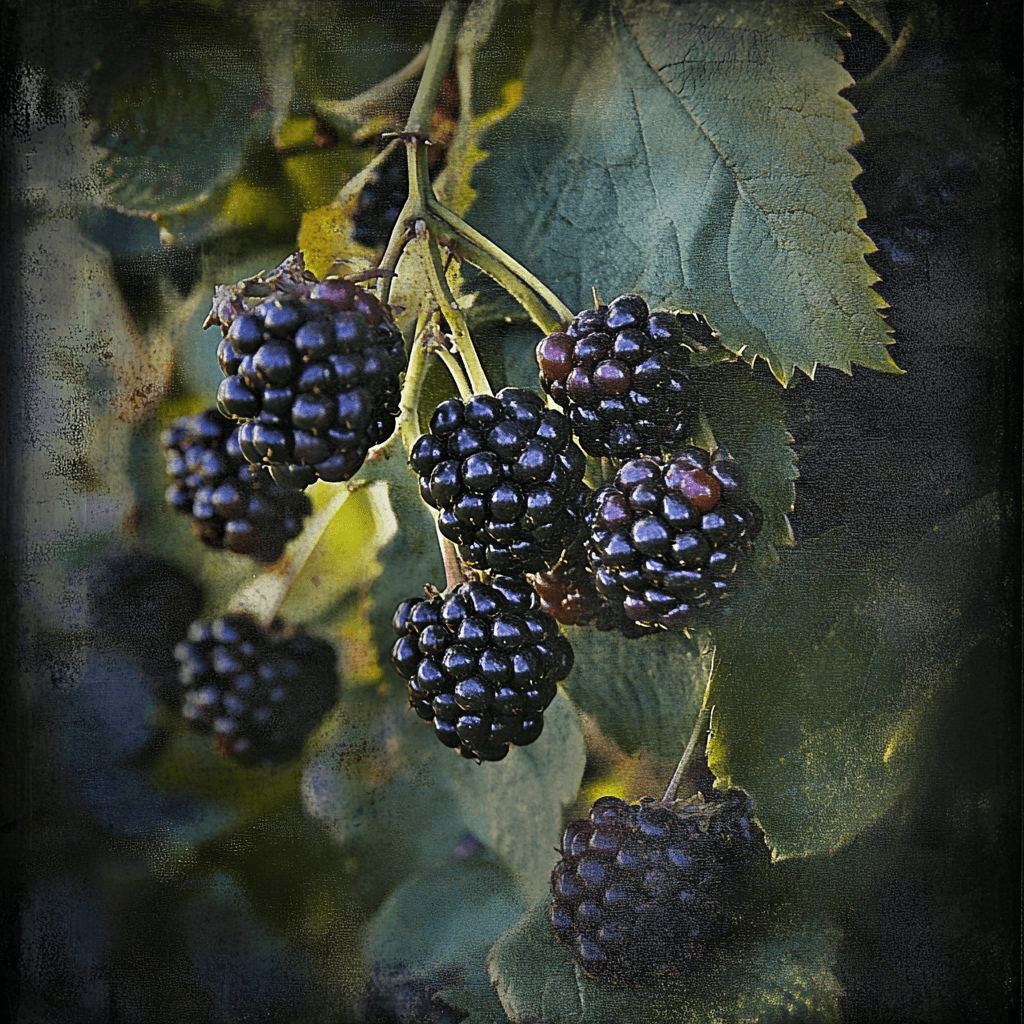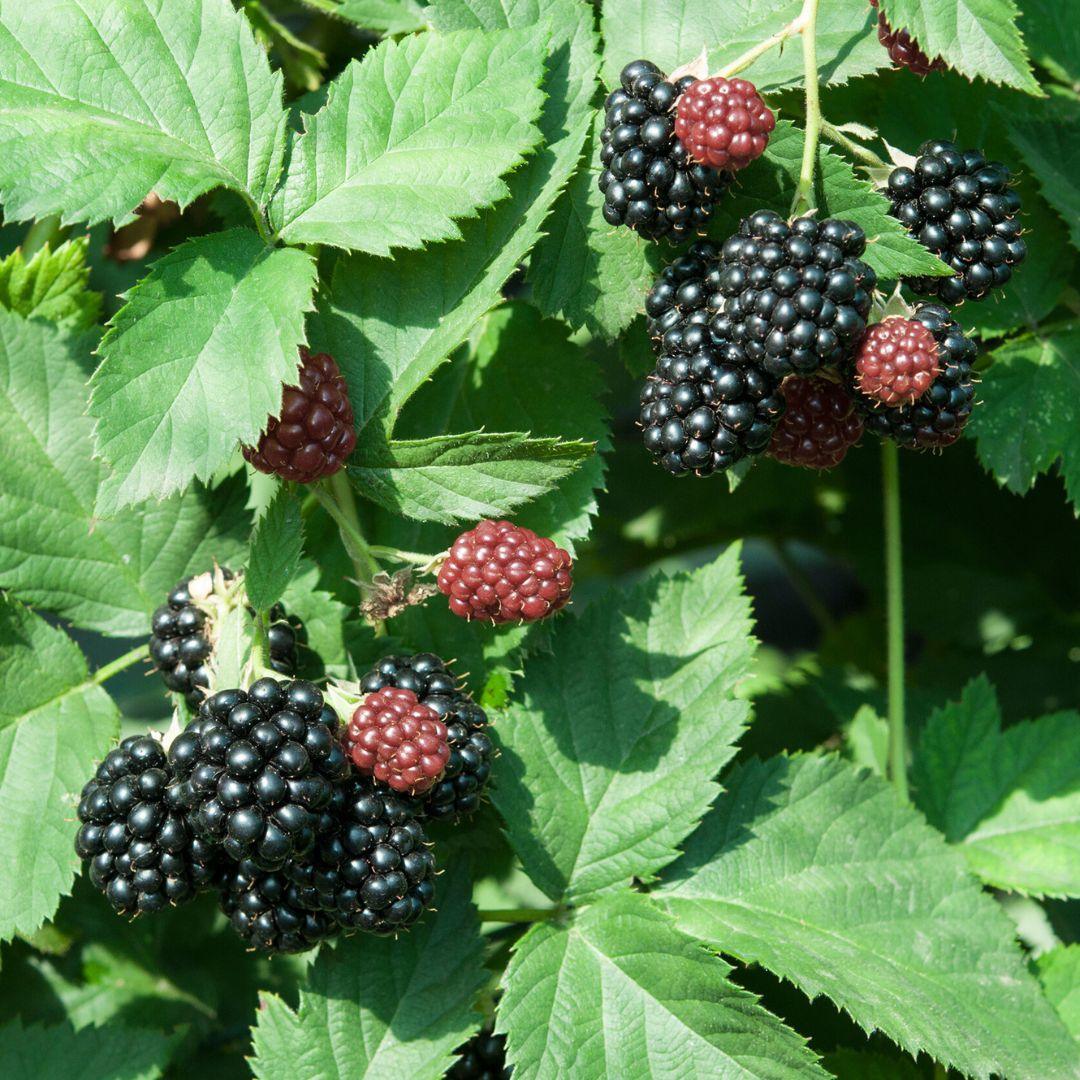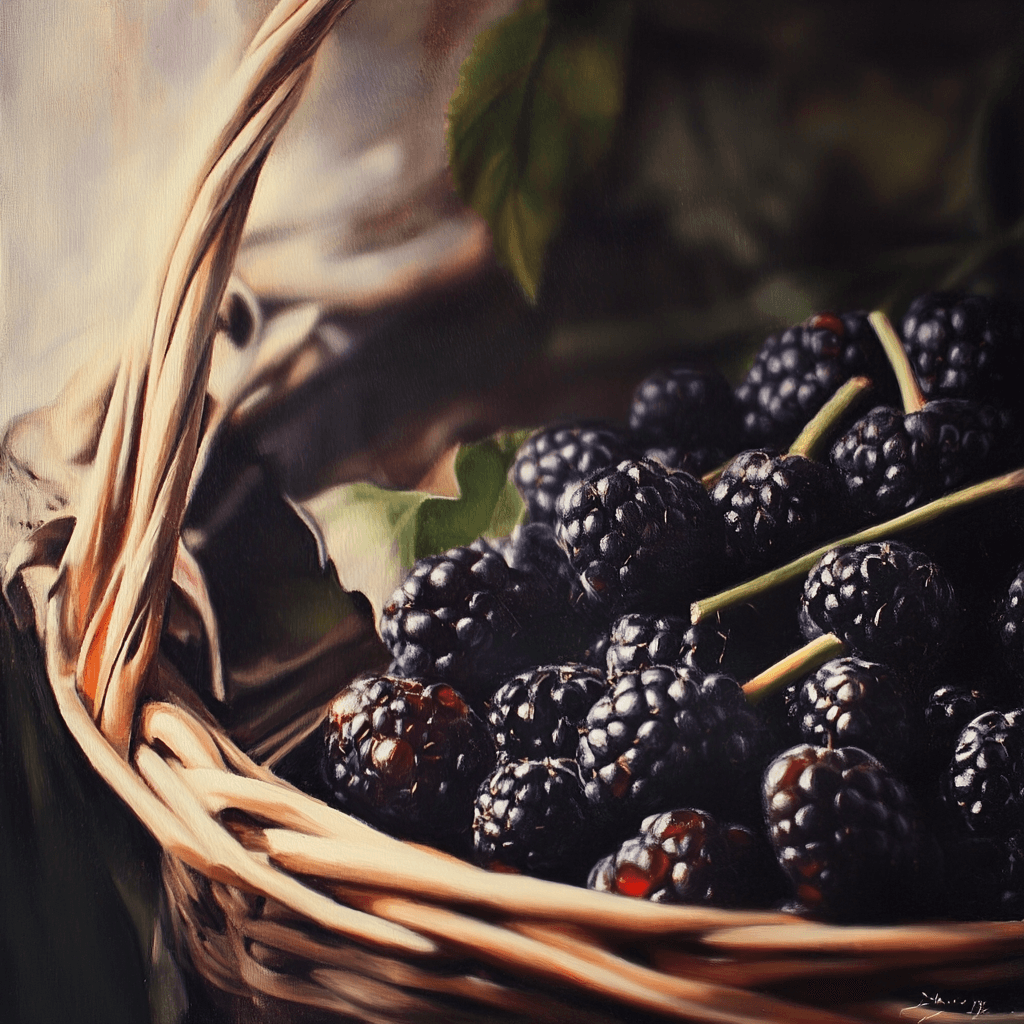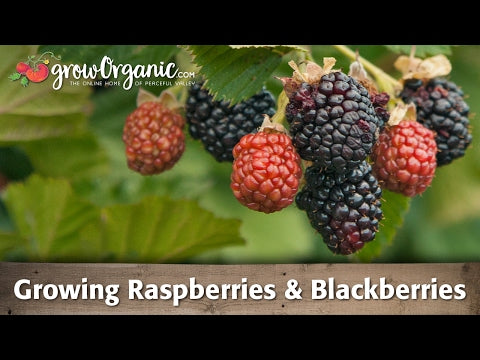Item Number: FV317
Marionberry
Juicy berries with a tangy twist.
Marionberries are a cherished variety among berry enthusiasts, celebrated for their exceptional flavor, robust growth, and versatility in the kitchen. The fruit is large, glossy, and deeply rich in color, with a tangy-sweet taste that strikes the perfect balance between tart and sweet. Renowned for their complex flavor profile, Marionberries deliver an intense burst of berry goodness that enhances both savory and sweet dishes alike.
This premium variety is a favorite for fresh eating, offering a juicy, satisfying snack straight from the garden. Its rich flavor makes it a star ingredient in pies, cobblers, and tarts, while its natural sweetness adds depth to preserves, syrups, and smoothies. Marionberries also freeze beautifully, retaining their flavor and texture for year-round enjoyment.
The plants thrive in full sun and well-draining soil, producing vigorous, semi-erect canes that are easy to manage with proper support. These productive plants are known for their high yields, ripening in mid-summer with a bountiful harvest of berries that are as stunning as they are delicious. Their resilience and adaptability make them a reliable choice for both novice and experienced gardeners.
Marionberries are prized not only for their flavor but also for their outstanding quality, making them a standout addition to any garden. Whether you grow them for fresh enjoyment or culinary creations, this beloved variety promises to deliver a truly premium berry experience.
- Available as Bare Root (Mix-and-match for free shipping when purchasing 6 or more perennial berries, vines, or crowns) or Potted (Mix-and-match 4 or more potted berry plants for free shipping)
- Chill Hours needed: 300 - 500 hours
- Zones: 6-9
- Harvest: Ripens in July and early August
- Fruit: Medium-large, bright black berries with an earthy tart sweet flavor.
- Facts of note: A vigorous trailing vine (with thorns) that grows up to 20' long. Good for local fresh markets, canning, freezing, pies, ice cream flavoring, jams and jellies. Good shelf life. High quality, with flavor superior to Boysenberry. A cane berry hybrid from crossing 'Chehalem' and 'Olallie' blackberries developed in 1945 at Oregon State University.
- Plants are 2 year, grade #1
For more information, please enjoy our Growing Guide for planting and growing blackberries.
Growing Marionberries: A Guide to Cultivating Flavorful Delights
Marionberries, renowned for their deep flavor and juicy berries, are a delightful addition to any garden. This cane berry hybrid, resulting from the crossbreeding of 'Chehalem' and 'Olallie' blackberries in 1945 at Oregon State University, has gained popularity for its superior taste and adaptability. To successfully cultivate Marionberries, one must understand the plant's characteristics, ideal growing conditions, and proper harvesting techniques.
Plant Characteristics:
Marionberries are characterized by medium to large, bright black berries with an earthy tart-sweet flavor. The berries are highly versatile and suitable for local fresh markets, canning, freezing, pies, ice cream flavoring, jams, and jellies. The plant itself is a vigorous trailing vine that can grow up to 20 feet in length. It's important to note that Marionberries come with thorns, adding an extra layer of consideration for growers. The origins of Marionberries trace back to Oregon, where they were developed as a result of meticulous crossbreeding. The parentage includes the 'Chehalem' and 'Olallie' blackberries, and this hybrid has proven to be a high-quality cultivar with a flavor superior to the well-known Boysenberry.
Growing Conditions:
To cultivate Marionberries successfully, it is crucial to provide the right growing conditions. These plants thrive in Zones 6-9, making them suitable for various climates. When selecting a location for planting, opt for well-drained, fertile soil that receives full sun exposure. Marionberries flourish when the soil has good drainage, preventing waterlogged conditions that can harm the roots. Regular watering is essential for Marionberry bushes. Keep the soil consistently moist, especially during dry periods, to ensure optimal growth. However, it's equally important to avoid waterlogged conditions, which can lead to root rot. Pruning plays a vital role in maintaining the health of Marionberry plants and encouraging fruit production. These vigorous trailing vines can benefit from pruning to manage their growth and increase airflow, reducing the risk of diseases. Prune the canes in late winter or early spring, removing dead or weak canes and shaping the plant for better sunlight penetration.
Harvesting Marionberries:
Marionberries typically bear fruit in the summer, offering a long harvest season that extends from June through the summer months. Harvesting should be timed carefully to ensure the berries reach peak ripeness. Look for fully blackened berries that are firm and plump. Marionberries are known for their sweet and bright flavor, making them excellent for fresh consumption, desserts, pies, and various culinary applications. When harvesting Marionberries, use clean, sharp pruning shears to cut the berries from the plant. Be gentle to avoid damaging the delicate berries and surrounding foliage.
For more information, please enjoy our Growing Guide for planting and growing blackberries.
Visit our Berry, Vine & Crowns Characteristics Chart to compare growing characteristics for all our berries, vines, and crowns.


Check Your Zone Compatibility:
Compatible with your zone.
Growing Zone for

Our Guarantee To You
Since 1976, we've served our customers at every stage of growing. Please contact us at any time. We are happy to support and assist you.
Shipping Information
Shipping Information
Cannot ship to the following states: HI, AK, PR, GU, VI
Shipping Weight: 4.5 lb
Dimensions: 35.9"L x 3.9"W x 3.9"H
Features
Features
- Bears on Floricanes
- Container Compatible
- Easily Established
- Plant Spreads
- Self-fruitful
Characteristics
Characteristics
Planting & Care
Planting & Care
Useful Information
Useful Information
Guarantee
Guarantee
Share



My plants are a decent size and look good. Hope they grow!
Received item quickly. Plant looks healthy. Thank you




